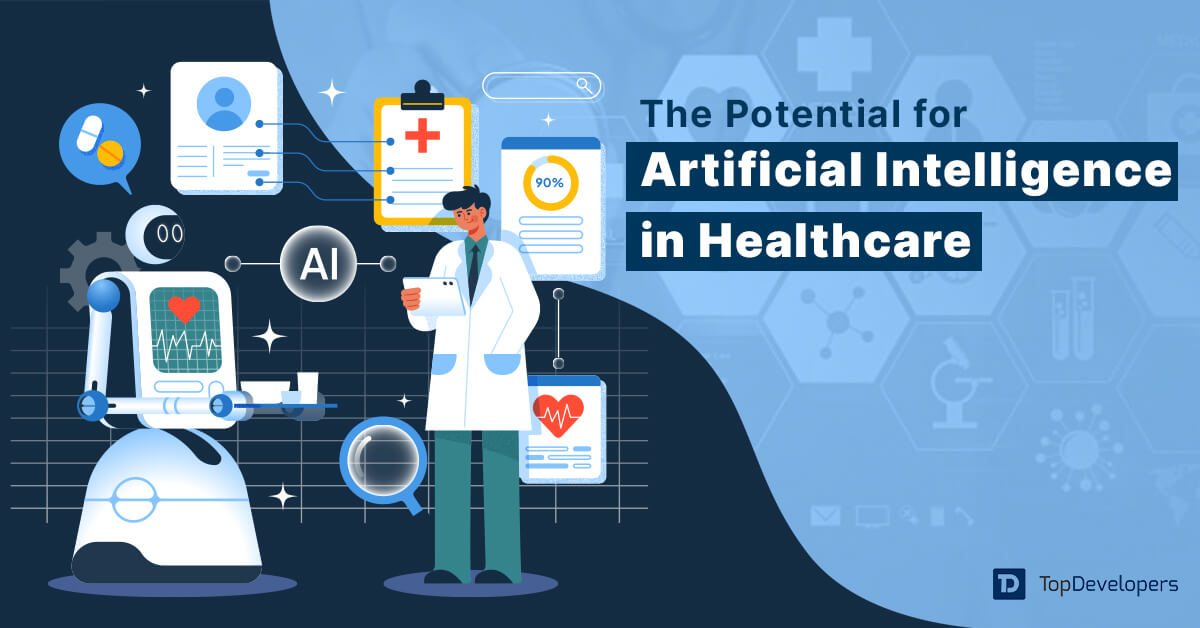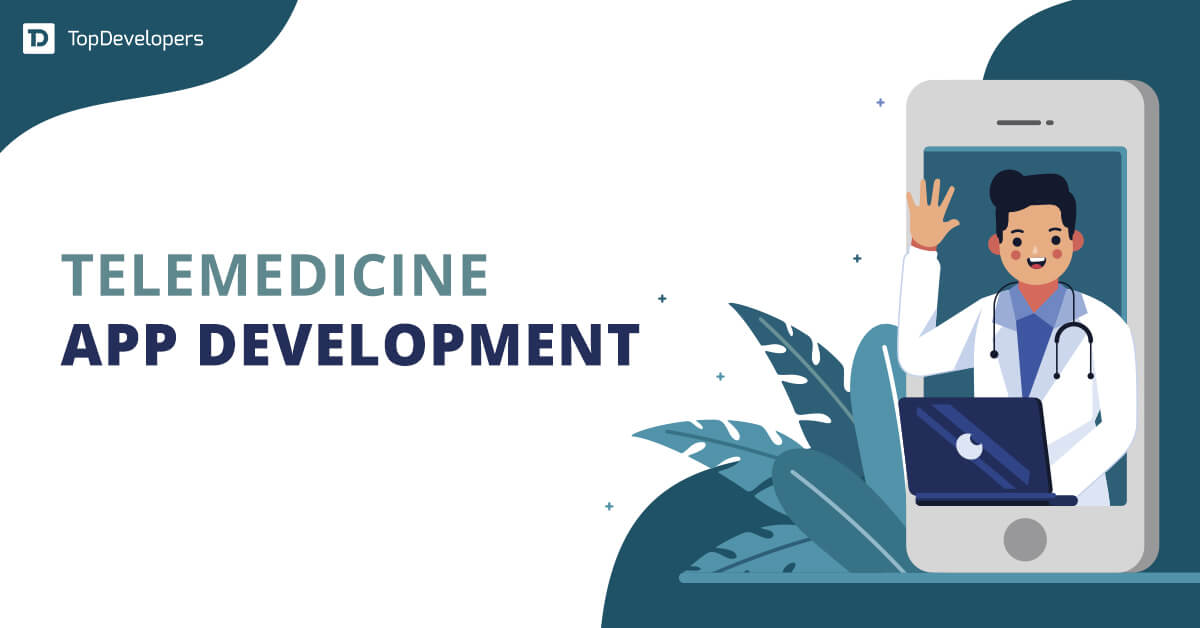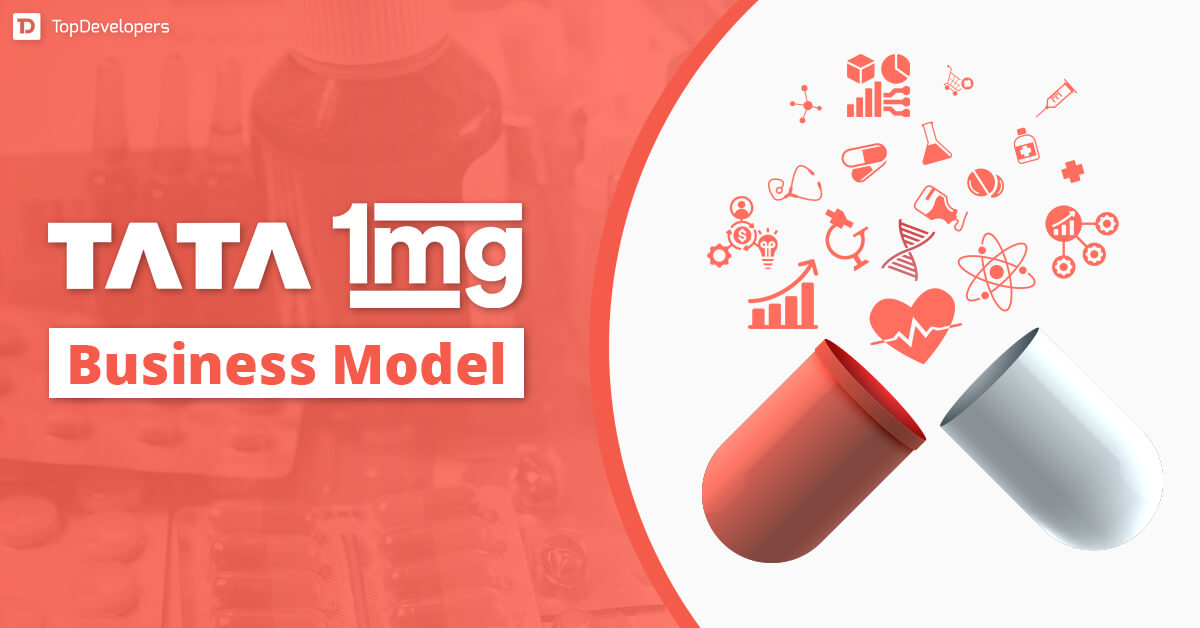
The adoption of SaaS technology in healthcare has dramatically transformed the industry, offering innovative solutions to age-old challenges such as managing chronic illnesses, improving patient safety, and reducing healthcare costs. In recent years, the healthcare SaaS market has experienced exponential growth, with projections indicating it will exceed $100 billion in value by 2030, fueled by advancements in cloud computing, big data, and AI technologies.
Global events like the COVID-19 pandemic acted as a catalyst for this growth, accelerating the need for remote care solutions, telemedicine platforms, and secure data management systems. These developments have underscored the importance of adopting a scalable, efficient, and cost-effective SaaS business model to enhance healthcare delivery.
One standout trend driving this revolution is telemedicine, which has bridged the gap between patients and healthcare providers, ensuring timely consultations and personalized care even in the most remote locations. As we explore the latest healthcare SaaS trends, you’ll discover how these innovations are reshaping the medical industry and paving the way for a smarter, more efficient future in healthcare.
Table of Contents
- What Is Healthcare SaaS?
- Which Top Healthcare SaaS Trends Are Currently Driving the Sector?
- Artificial Intelligence (AI)
- Wearable Devices and Remote Patient Monitoring
- Multiple Cloud Strategy
- Vertical SaaS
- Pay-Per-Use Model
- Micro SaaS
- Interoperability and API Integrations
- Data as a Service (DaaS)
- Platform as a Service (PaaS) Migration
- Edge Computing
- Mobile Health Solutions
- Telemedicine Solutions
- Patient Self-Service Platforms
- Blockchain-Powered Data Security Solutions
- Value-Based Care Model
- Data Interoperability
- Cybersecurity and Compliance
- Benefits of Healthcare SaaS
- Ready to Revolutionize the Medical Industry With SaaS?
What Is Healthcare SaaS?
Healthcare Software as a Service (SaaS) refers to cloud-based software solutions specifically designed to help healthcare organizations manage their operations, streamline processes, and enhance patient care. These solutions are hosted on the cloud, eliminating the need for on-premise infrastructure, and provide access to critical data and tools from anywhere at any time. Healthcare SaaS offerings include everything from Electronic Medical Records (EMR) and Revenue Cycle Management (RCM) to telehealth solutions, patient portals, and remote patient monitoring systems.
In addition to the well-established solutions, newer trends like patient engagement platforms and remote patient monitoring are gaining traction. These platforms empower patients by providing real-time access to their health data, appointment scheduling, and communication with healthcare professionals. Remote patient monitoring, in particular, allows healthcare providers to track patients’ health metrics like blood pressure, glucose levels, or heart rate through wearable devices or at-home equipment. This trend has been particularly valuable for managing chronic conditions and ensuring continuous care for patients without requiring frequent in-person visits.
A great example of a widely used healthcare SaaS product is Epic Systems, one of the largest providers of EMR solutions. Epic’s cloud-based platform streamlines hospital and clinic workflows, providing real-time data access, facilitating decision-making, and improving patient outcomes. The platform integrates various tools, including telehealth features, allowing healthcare professionals to offer virtual consultations, monitor patient data remotely, and improve collaboration across medical teams.
By outsourcing the development and maintenance of these systems to top-tier healthcare software developers, organizations can ensure they are always up to date with the latest features and innovations, driving efficiency and better patient care across the board. As healthcare SaaS continues to evolve, the benefits of these solutions are becoming increasingly apparent, transforming the way healthcare is delivered worldwide.
Which Top Healthcare SaaS Trends Are Currently Driving the Sector?
Artificial Intelligence (AI)
Artificial Intelligence (AI) has evolved from a promising concept to a powerful tool that’s reshaping healthcare. Generative AI is particularly gaining momentum, especially in diagnostics. It analyzes vast amounts of medical data to identify patterns and predict outcomes with incredible accuracy, helping healthcare professionals make faster, more informed decisions. AI-powered tools assist radiologists by detecting abnormalities in medical images, while AI chatbots enhance patient engagement by providing instant responses to inquiries. These advancements enable healthcare providers to deliver better care, with AI contributing to everything from clinical decision-making to administrative tasks, such as billing and scheduling.
Wearable Devices and Remote Patient Monitoring
Wearable technology continues to evolve, with devices now tracking everything from heart rate and blood oxygen levels to sleep patterns and blood sugar levels. SaaS platforms are harnessing this data, providing healthcare professionals with continuous patient insights and the ability to act quickly when necessary. This remote patient monitoring (RPM) trend is especially critical for managing chronic diseases such as diabetes and hypertension, where real-time data collection ensures proactive care. Platforms like Fitbit Health Solutions and Apple HealthKit are just a couple of examples of how wearable tech integrates with SaaS to provide an ongoing snapshot of a patient’s health.
Multiple Cloud Strategy
Adopting a multi-cloud strategy helps healthcare organizations improve flexibility, lower bandwidth costs, and enhance data analysis capabilities. This approach enables healthcare providers to store sensitive data across multiple cloud environments, ensuring higher levels of reliability, security, and performance. Multi-cloud also aids in disaster recovery, offering organizations greater peace of mind when it comes to data protection.
Vertical SaaS
Vertical SaaS solutions have gained popularity over traditional horizontal solutions, especially within specialized healthcare fields. These tailored solutions cater to the specific needs of healthcare providers, including customized workflows for patient management, billing, and clinical support. Vertical SaaS platforms help businesses streamline operations and provide a more efficient, patient-centered approach.
Pay-Per-Use Model
The pay-per-use subscription model is revolutionizing SaaS pricing, allowing healthcare organizations to pay for exactly what they need. This model is particularly beneficial for small practices or temporary healthcare staff, offering a cost-effective way to access essential tools without the financial commitment of full-scale implementations. It ensures healthcare providers only pay for the services they utilize, increasing the affordability and accessibility of technology.
Micro SaaS
Healthcare SaaS is becoming more customized and scalable through the rise of Micro SaaS solutions. These lightweight, niche products are designed to serve specific needs within a healthcare practice or organization. Small clinics or individual practitioners can now access affordable, tailored SaaS tools that fit their exact requirements without the need for complex or costly infrastructure.
Coupled with the pay-per-use model, these solutions offer significant cost savings. Healthcare organizations can now opt for subscription models or pay only for the services they use, making it easier for smaller institutions to adopt cutting-edge technology without breaking the bank. This flexibility is transforming healthcare delivery by lowering the barriers to entry for technology adoption, especially for independent practitioners and smaller clinics.
Interoperability and API Integrations
Fragmentation in healthcare IT systems has long been a challenge, making it difficult for healthcare providers to access and share patient data efficiently. Data interoperability has become a critical focus for healthcare SaaS providers, ensuring that different systems (EMR, RCM, telehealth platforms) can communicate with one another seamlessly. This is where API integrations come into play—allowing healthcare organizations to extend the functionality of their SaaS platforms by connecting them with third-party applications. This interconnected ecosystem enables better care coordination, faster decision-making, and a more holistic view of the patient’s health journey.
Data as a Service (DaaS)
DaaS is emerging as a powerful tool for healthcare organizations, offering real-time access to critical data and insights that improve decision-making. By utilizing DaaS, healthcare providers can gain valuable predictive insights to enhance patient care, optimize operations, and boost ROI. This model allows for data-driven strategies that improve the quality of care and reduce operational inefficiencies.
Platform as a Service (PaaS) Migration
PaaS migration is simplifying the process of moving healthcare applications and data to the cloud. This shift enables healthcare organizations to access scalable, secure platforms without the need for expensive physical servers. PaaS solutions provide an efficient infrastructure for healthcare SaaS applications, allowing organizations to innovate and scale their operations with ease.
Edge Computing
Edge computing is revolutionizing how healthcare data is processed and stored. By enabling local processing at the “edge” of the network—closer to where the data is generated—edge computing helps healthcare organizations reduce latency, ensure continuous data flow, and maintain operations even without an internet connection. This technology is especially valuable in critical care environments where real-time data processing is essential.
Mobile Health Solutions
Mobile health apps integrated with wearable devices are increasingly popular for monitoring health metrics like heart rate, blood pressure, and sleep patterns. These apps encourage patients to take a proactive approach to their health, empowering them to make informed decisions based on real-time data. With the continued growth of connected devices, mobile health solutions are fostering a more personalized, patient-centered healthcare experience.
Telemedicine Solutions
The rise of telemedicine has revolutionized healthcare, enabling real-time consultations between patients and healthcare providers from the comfort of their own homes. Telehealth SaaS platforms, such as Teladoc and Doctor on Demand, are offering services like video consultations, remote diagnoses, and even virtual prescriptions. The convenience and accessibility of telemedicine have not only increased patient satisfaction but have also expanded access to healthcare, especially in underserved or rural areas. As telemedicine evolves, expect to see more advanced integrations with AI, patient portals, and wearable devices for a more comprehensive virtual care experience.
Patient Self-Service Platforms
With a focus on patient engagement, self-service platforms are becoming more popular, allowing patients to actively participate in their own care. From scheduling appointments to accessing medical records and completing pre-appointment questionnaires, self-service tools streamline administrative tasks and empower patients to take charge of their health.
Blockchain-Powered Data Security Solutions
Data security is paramount in healthcare, and blockchain technology is emerging as a powerful tool to enhance data security and transparency. By leveraging blockchain’s distributed ledger and cryptographic capabilities, healthcare SaaS solutions can ensure that patient records are immutable and secure. Blockchain helps prevent unauthorized access, ensuring the integrity of sensitive health data. In an age where data breaches are increasingly common, blockchain is providing an additional layer of protection, ensuring that patient data remains private and tamper-proof.
Value-Based Care Model
The value-based care model is shifting healthcare towards a more patient-centric approach, where the focus is on improving health outcomes rather than the volume of services provided. By leveraging IT solutions, healthcare organizations can predict patient needs and deliver personalized, preventive care that improves long-term outcomes while reducing costs.
Data Interoperability
The shift toward value-based care is another trend reshaping the healthcare landscape. Unlike traditional fee-for-service models, value-based care focuses on improving patient outcomes and reducing costs by incentivizing healthcare providers to deliver high-quality care. SaaS platforms powered by predictive analytics are helping healthcare organizations identify at-risk patients and intervene before conditions worsen. These platforms use data to forecast patient needs, enabling providers to offer preventive care, reduce hospital readmissions, and improve long-term health outcomes.
Cybersecurity and Compliance
With increasing cyber threats in the healthcare sector, cybersecurity and compliance have never been more critical. SaaS solutions must adhere to stringent regulatory requirements, including HIPAA, to protect patient data and avoid costly penalties. Robust security measures, such as encryption, multi-factor authentication, and regular audits, are essential for safeguarding sensitive information and maintaining trust with patients.
Benefits of Healthcare SaaS
Cost-Effectiveness and Scalability
One of the primary benefits of Healthcare SaaS is its cost-effectiveness. Traditional software solutions often come with high upfront costs, complex installations, and significant maintenance requirements. SaaS, on the other hand, offers healthcare institutes a pay-as-you-go model, eliminating the need for expensive infrastructure and making it easier to scale as the organization grows. With the global telemedicine market expected to reach $539.73 billion by 2029, the pay-per-use model is making healthcare more affordable and accessible, especially for small practices and rural healthcare providers.
Example: A prominent hospital group in California adopted a SaaS-based electronic health record (EHR) system, leading to a 15% reduction in operational costs by eliminating outdated infrastructure and streamlining patient data management.
Enhanced Collaboration and Communication
In healthcare, collaboration among different specialists and departments is key to improving patient outcomes. SaaS platforms enable real-time sharing of patient data, allowing doctors, nurses, and administrative staff to communicate seamlessly and work together more efficiently. This is particularly crucial in critical care situations where every second counts.
Example: A leading hospital in New York implemented a cloud-based SaaS platform for real-time communication between departments. This led to a 20% reduction in patient wait times for critical care, improving patient satisfaction and overall care delivery.
Improved Data Security and Compliance
Data security is a top priority for healthcare organizations, given the sensitive nature of patient information. Healthcare SaaS platforms are equipped with advanced encryption, multi-factor authentication, and regular security updates, ensuring that patient data remains safe and compliant with regulations like HIPAA and GDPR.
With cyberattacks on healthcare organizations increasing by 50% in recent years, SaaS providers are focused on delivering cutting-edge security solutions that protect against breaches while maintaining data integrity. Healthcare SaaS ensures that sensitive data is stored securely and accessed only by authorized personnel, helping organizations avoid costly data breaches and compliance violations.
Example: A major healthcare provider in the UK switched to a SaaS-based EHR system and reported a 40% decrease in security breaches, with enhanced data encryption and secure cloud storage preventing unauthorized access.
Accessibility and Real-Time Updates
Healthcare professionals need access to real-time patient data to make informed decisions. SaaS solutions enable cloud-based access to patient records and other critical data, regardless of location. This allows healthcare providers to update information in real time, ensuring that the most accurate, up-to-date information is available when needed.
In fact, the global EHR market is expected to reach $28.13 billion by 2029, driven largely by the growing demand for real-time data access and the seamless integration of patient records across systems.
Example: A rural hospital network in Texas adopted a cloud-based SaaS solution, enabling doctors to access patient records instantly from multiple locations. This resulted in a 30% increase in treatment speed, as healthcare professionals no longer had to rely on outdated paper records or wait for faxed information.
Sustainability and Reduced Environmental Impact
As healthcare service providers move toward digital solutions, there is a growing emphasis on sustainability and reducing the environmental impact of healthcare operations. SaaS platforms contribute to this goal by reducing the need for physical infrastructure, paper records, and transportation for in-person consultations. By shifting to cloud-based solutions, healthcare providers can lower their carbon footprint and minimize waste.
Additionally, SaaS solutions can help healthcare organizations track and manage their sustainability efforts, from reducing energy consumption to minimizing paper usage. This growing trend is making healthcare more eco-friendly and aligned with global sustainability goals.
Example: A major health system in Europe transitioned to a paperless, cloud-based SaaS system, reducing its paper consumption by 70% and cutting its overall carbon footprint by 15%.
Improved Patient Engagement and Experience
Patient engagement is a crucial factor in improving health outcomes. SaaS solutions provide a range of tools that allow patients to actively participate in their care, such as scheduling appointments online, accessing their medical records, and communicating directly with healthcare providers through patient portals.
Example: A healthcare provider in California implemented a SaaS-based patient engagement platform, resulting in a 25% increase in patient portal usage and improved patient satisfaction. The platform enabled patients to easily track their health metrics, manage appointments, and receive reminders for medication, leading to better health outcomes.
Streamlined Administrative Tasks
SaaS platforms are revolutionizing administrative workflows in healthcare organizations. From billing and coding to insurance claims and staff scheduling, SaaS solutions automate many of the repetitive tasks that traditionally consumed valuable time. This not only improves operational efficiency but also allows healthcare workers to focus more on patient care rather than administrative burdens.
Example: A hospital in Florida adopted an automated SaaS billing system, which resulted in a 15% reduction in billing errors and a 20% faster claim processing time, freeing up resources to improve patient care.
Ready to Revolutionize the Medical Industry With SaaS?
The healthcare industry is standing at the cusp of the digital revolution to improve healthcare practices, enhance patient care, and increase productivity. SaaS technology is an invaluable addition to improving healthcare services within budget and delivering the best experience to patients. From communication and collaboration improvement to better patient engagement to scalability and security, healthcare SaaS is redefining the future of healthcare organizations.
Leveraging the latest healthcare SaaS trends, the results are spectacular for leading medical companies such as Practo, Tobii, Doctolib, and Perspecta. It makes great sense for medical organizations to develop or integrate SaaS solutions and grow exponentially by addressing all the challenges in healthcare operations and practices. Let’s create a positive impact with healthcare SaaS.
 Avantika Shergil
| Jan 6, 2025
Avantika Shergil
| Jan 6, 2025
Avantika Shergil is a technology enthusiast and thought leader with deep expertise in software development and web technologies. With over 8 years of experience analyzing and evaluating cutting-edge digital solutions, Avantika has a knack for demystifying complex tech trends. Her insights into modern programming frameworks, system architecture, and web innovation have empowered businesses to make informed decisions in the ever-evolving tech landscape. Avantika is passionate about bridging the gap between technology and business strategy, helping businesses build customized software and website, and understand about different tools to leverage effectively for their ventures. Explore her work for a unique perspective on the future of digital innovation.





